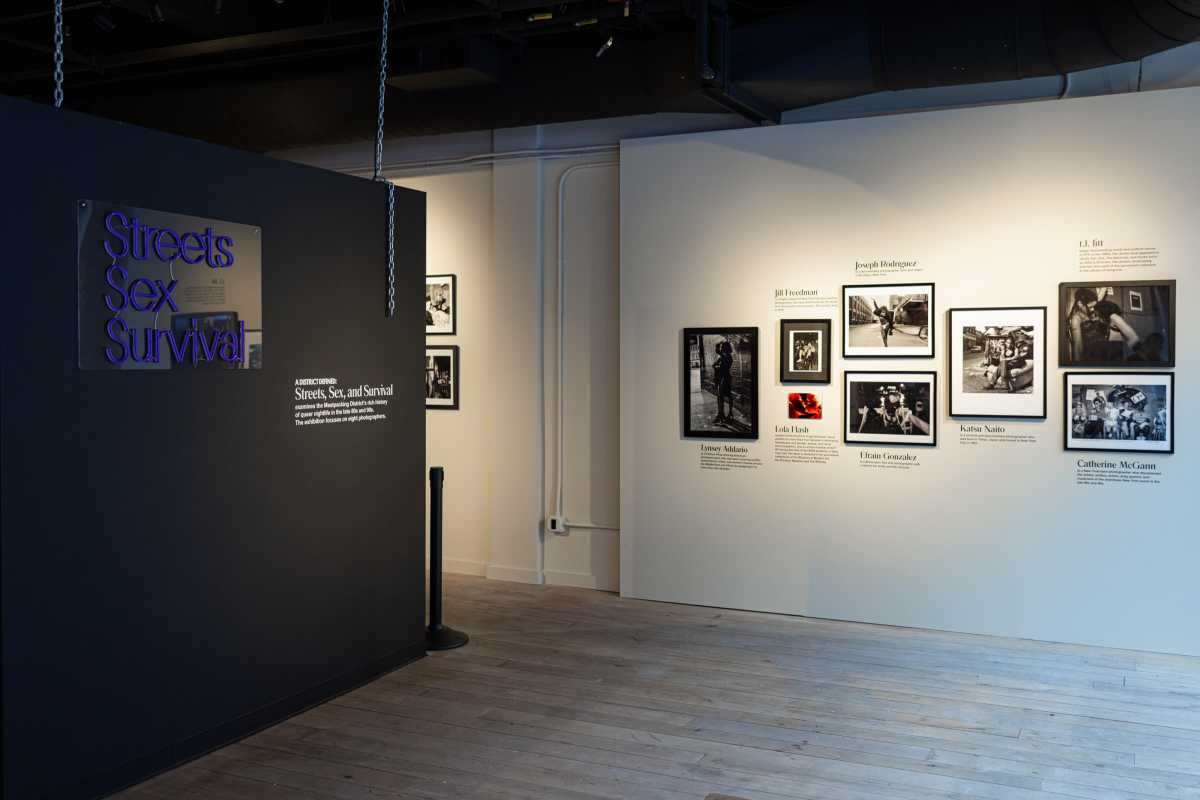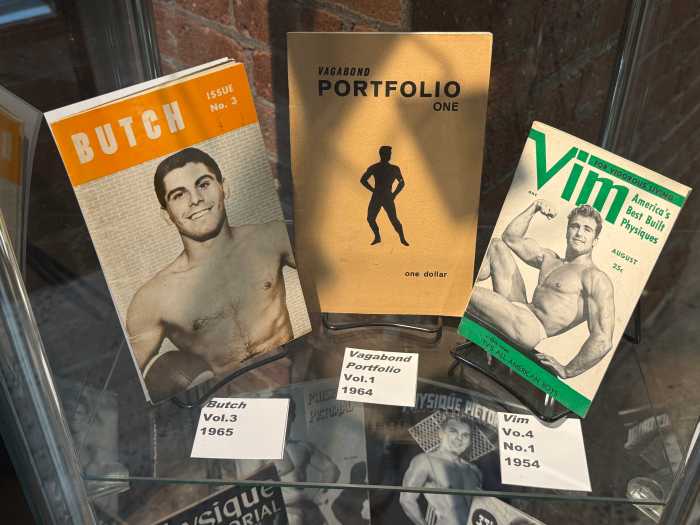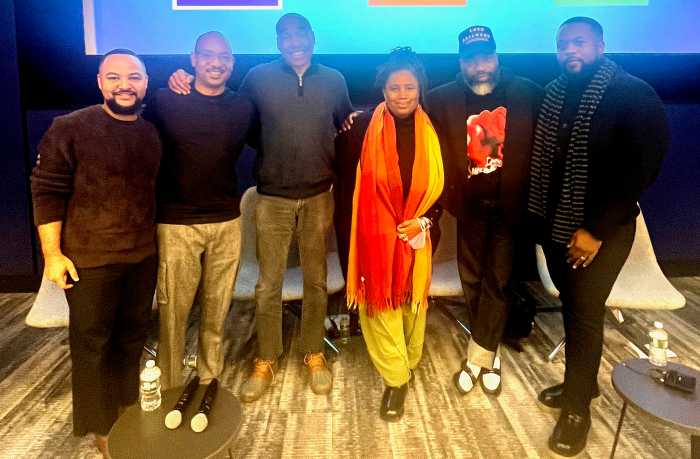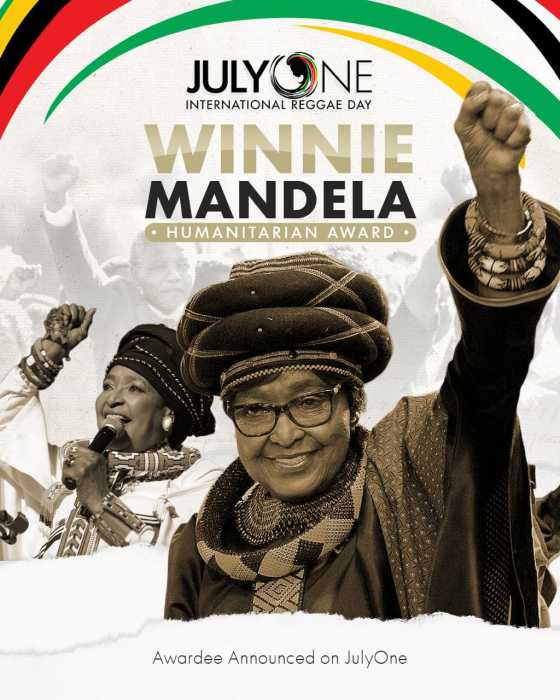The sex workers who were once based in the Meatpacking District are back on the walls of the 401 “concept space” at 401 W. 14th St. in an exhibit of photos by eight camera artists who also turned their lenses on LGBTQ nightlife in an era (late ‘80s and early ‘90s) when clubs such as the Anvil, Manhole, The Vault, Hell Fire, and the Clit Club were going strong and the mostly deserted cobblestone streets at night were for a walk on the wild side.
“A District Defined: Streets, Sex, and Survival” is on display through July 9 in the heart of a neighborhood now dominated by high-end retail and restaurants. The raw, mostly black and white images are of a culture that burned hot but died as AIDS and gentrification took their tolls. It’s sponsored by the Meatpacking Business Improvement District, headed by out gay executive director Jeffrey LeFrancois, in a collaboration with human rights activist and producer Tim Hayes.
Included are Efrain Gonzalez’s explicit shots inside S&M clubs; Richard Young’s picture of Freddie Mercury in a Mineshaft t-shirt; Catherine McGann’s snaps of denizens of the “Jackie 60” parties (1990-99), from Debbie Harry to Michael Musto and Chi Chi Valenti, along with a host of drag artists and fetishists; and photos of trans sex workers by Katsu Naito and Lynsey Addario.
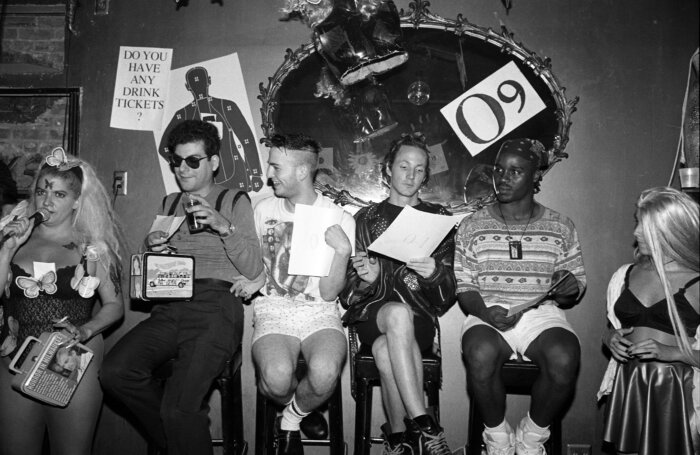
Scenes from David Sigal’s documentary, “Florent: Queen of the Meat Market,” are included, with Florent being the gay Frenchman whose eponymous restaurant drew club people 24 hours a day when there was not much else down there, and eventually attracted people from outside the area, including tourists.
Also displayed are photos in a book by Anthony Marini, “Celebrities at the Vault,” which opens to shots of Madonna getting eaten out and another of her brandishing a whip in a bondage scene. (Madonna called it “my favorite sex club.”)
In the new documentary “The Stroll” about transgender sex workers, one individual named Izzy revisits the streets of the district, collapses in tears, and says, “I can’t do this. I hate this place,” suggesting that life on these streets for her was anything but romantic and fun. But the photos of LGBTQ club-goers do show a wide variety of souls having good, dirty fun in very uninhibited settings.
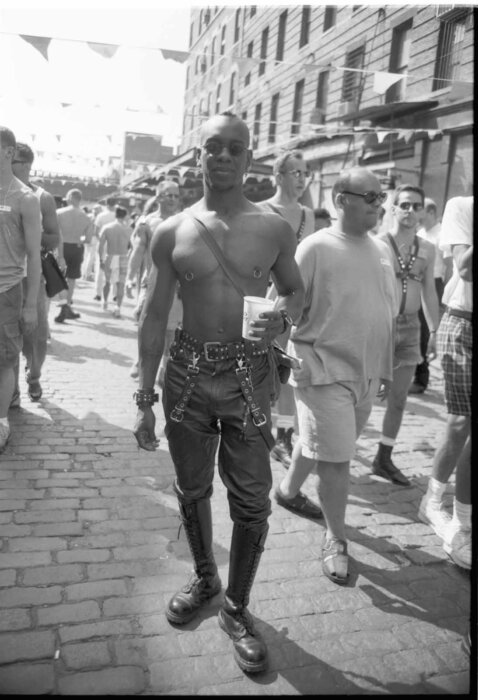
LeFrancois said they’re using the arts “as an engine of economic development.” He’s got the Whitney Museum and the High Line in the district, but this short exhibit had already drawn more than 1,500 people in its first week after a gala opening — an affair that drew some of the veterans of the bad/good old days who survived them. He said “it connects us to our LGBTQ history — distinct from the Stonewall” in the adjacent Greenwich Village.
According to LeFrancois and a young woman working the coffee bar in 401, this edgy, sexy exhibit has not attracted controversy as it certainly would in a red state or possibly even in other parts of the city. Perhaps that’s because, LeFrancois said, the “past” depicted in these photos “is one of the reasons the neighborhood is what it has become” — trendy and cool even if in a much different sense today, though he said that the people depicted were a “community that belonged and still belongs here.”
However expensive the area has become, this exhibit is free and runs through July 9: Sunday through Wednesday from 12-9 p.m. and Thursday through Saturday from 12-10 p.m. For info on evening programming at 401, go here.
Sales of some of the photos will benefit the American LGBTQ+ Museum, set to be based at the New-York Historical Society.

